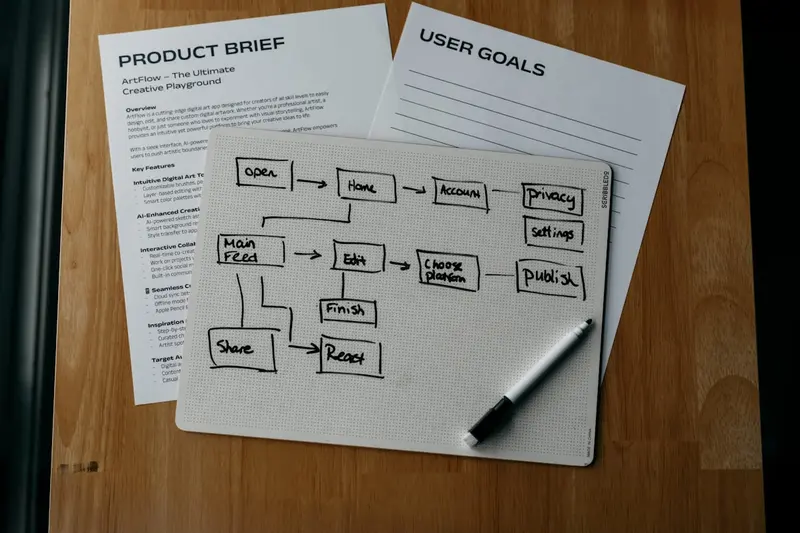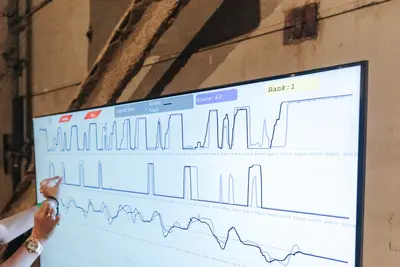⚙️ Managing User Process Limits: Simple Guide
Want to control how many processes users can run? I’ll show you how to set limits! 🛡️ This tutorial makes process management super easy. Even if system administration seems complex, you can do this! 😊
🤔 What are User Process Limits?
Process limits control how many programs a user can run at once. Think of it like setting a speed limit for cars on a road!
Process limits help you:
- 🛡️ Prevent system overload
- ⚖️ Share resources fairly among users
- 🔒 Stop runaway processes
- 📊 Keep system stable and responsive
🎯 What You Need
Before we start, you need:
- ✅ Alpine Linux system running
- ✅ Root or sudo permissions
- ✅ Basic understanding of users
- ✅ About 30 minutes to complete
📋 Step 1: Understanding Current Process Usage
Check Current Process Limits
Let’s see what limits are currently set. This is like checking the current speed limits! 🚦
What we’re doing: Examining current process limits and resource usage.
# Check current user's limits
ulimit -a
# Show limits for specific user
su - testuser -c "ulimit -a"
# Check system-wide process limits
cat /proc/sys/kernel/pid_max
# Show current running processes per user
ps aux | awk '{print $1}' | sort | uniq -c | sort -nr
# Check process count for current user
ps -u $(whoami) | wc -l
# Show memory limits
cat /proc/meminfo | grep -E "(MemTotal|MemFree)"What this does: 📖 Shows you current process limits and usage.
Example output:
✅ Current limits displayed
✅ Process counts shown
✅ System resources visibleWhat this means: You can see how your system manages processes! ✅
💡 Limit Basics
Tip: Default limits might be too high or too low for your needs! 💡
Note: Different users can have different limits! ⚠️
🛠️ Step 2: Configuring Process Limits
Set Temporary Limits
Let’s set some basic process limits first. These are temporary for testing! 🧪
What we’re doing: Setting temporary process limits for the current session.
# Set maximum number of processes for current user
ulimit -u 100
# Set maximum file descriptors
ulimit -n 1024
# Set maximum CPU time (seconds)
ulimit -t 3600
# Set maximum memory size (KB)
ulimit -m 1048576
# Check the new limits
ulimit -a
# Test the process limit
for i in {1..10}; do sleep 60 & done
jobsCode explanation:
ulimit -u 100: Limits user to 100 processesulimit -n 1024: Limits to 1024 open filesulimit -t 3600: Limits CPU time to 1 hourulimit -m 1048576: Limits memory to 1GB
Expected Output:
✅ Process limits set
✅ Limits take effect immediately
✅ System remains stableWhat this means: You can now control process usage! 🎉
📄 Step 3: Permanent Limit Configuration
Configure limits.conf
Now let’s make limits permanent using the limits configuration file! 📝
What we’re doing: Setting permanent process limits that persist across reboots.
# Create or edit limits configuration
cat > /etc/security/limits.conf << 'EOF'
# Process limits configuration
# Format: <domain> <type> <item> <value>
# Limits for regular users
@users soft nproc 50
@users hard nproc 100
@users soft nofile 1024
@users hard nofile 2048
# Limits for specific user
testuser soft nproc 25
testuser hard nproc 50
testuser soft cpu 1800
testuser hard cpu 3600
# Limits for developers group
@developers soft nproc 200
@developers hard nproc 500
@developers soft nofile 4096
@developers hard nofile 8192
# System limits
* soft core 0
* hard rss 1048576
EOF
# Check the configuration
cat /etc/security/limits.conf
# Make sure pam_limits is enabled
grep -q "pam_limits.so" /etc/pam.d/login || echo "session required pam_limits.so" >> /etc/pam.d/loginCode explanation:
soft: Warning limit (can be increased by user)hard: Maximum limit (cannot be exceeded)nproc: Number of processesnofile: Number of open files@users: Applies to users group
What this does: Creates permanent limits that work after reboot! 💾
You should see:
✅ Limits configuration created
✅ PAM integration enabled
✅ Settings will persistPerfect! Your process limits are now permanent! 🌟
🎮 Let’s Try It!
Time to test our process limits! This is the exciting part! 🎯
What we’re doing: Testing process limits with real users and scenarios.
Test Process Limits
# Create a test user
adduser testuser
# Check limits for test user
su - testuser -c "ulimit -a"
# Try to exceed process limit
su - testuser -c "
for i in {1..60}; do
sleep 300 &
done
echo 'Processes started: '
jobs | wc -l
"
# Check if limit was enforced
ps -u testuser | wc -l
# Show current resource usage
pstree -u testuserMonitor Process Usage
# Watch process counts in real-time
watch -n 2 'ps aux | awk "{print \$1}" | sort | uniq -c | sort -nr | head -10'
# Monitor specific user
watch -n 2 'ps -u testuser --no-headers | wc -l'
# Check system load
uptime
# Show memory usage per user
ps --no-headers -eo user,pid,pcpu,pmem,comm | awk '{mem[$1] += $4; proc[$1]++} END {for (user in mem) printf "User: %-10s Processes: %-5d Memory: %.2f%%\n", user, proc[user], mem[user]}'You should see:
✅ Limits enforced properly
✅ Processes stopped at limit
✅ System remains stable
✅ Resources controlledAmazing work! Your process limits are working! 🌟
📊 Process Limits Summary Table
| Limit Type | Soft Limit | Hard Limit | Purpose |
|---|---|---|---|
| ⚙️ nproc | 50 | 100 | ✅ Number of processes |
| 📁 nofile | 1024 | 2048 | ✅ Open files |
| ⏰ cpu | 1800 | 3600 | ✅ CPU time (seconds) |
| 💾 rss | - | 1048576 | ✅ Memory usage (KB) |
🎮 Practice Time!
Let’s set up advanced process management:
Example 1: Group-Based Limits 🟢
What we’re doing: Setting different limits for different user groups.
# Create user groups
addgroup developers
addgroup operators
addgroup guests
# Add users to groups
adduser alice developers
adduser bob operators
adduser charlie guests
# Configure group limits
cat >> /etc/security/limits.conf << 'EOF'
# Developer group - higher limits
@developers soft nproc 300
@developers hard nproc 500
@developers soft nofile 4096
@developers hard nofile 8192
@developers soft cpu 7200
# Operators group - moderate limits
@operators soft nproc 100
@operators hard nproc 200
@operators soft nofile 2048
@operators hard nofile 4096
# Guests group - restricted limits
@guests soft nproc 10
@guests hard nproc 20
@guests soft nofile 256
@guests hard nofile 512
@guests soft cpu 900
EOF
# Test group limits
su - alice -c "ulimit -a | grep processes"
su - bob -c "ulimit -a | grep processes"
su - charlie -c "ulimit -a | grep processes"What this does: Gives different user types appropriate resource limits! 👥
Example 2: System Resource Monitoring 🟡
What we’re doing: Setting up monitoring for process limit violations.
# Create monitoring script
cat > /usr/local/bin/process-monitor.sh << 'EOF'
#!/bin/bash
# Process limit monitoring script
LOG_FILE="/var/log/process-limits.log"
ALERT_THRESHOLD=80
# Function to check user process count
check_user_processes() {
local user=$1
local limit=$(su - $user -c "ulimit -u" 2>/dev/null)
local current=$(ps -u $user --no-headers | wc -l 2>/dev/null)
if [ -n "$limit" ] && [ "$limit" != "unlimited" ] && [ $current -gt 0 ]; then
local percentage=$((current * 100 / limit))
if [ $percentage -ge $ALERT_THRESHOLD ]; then
echo "$(date): WARNING - User $user using $current/$limit processes ($percentage%)" >> $LOG_FILE
fi
fi
}
# Check all users
for user in $(cut -d: -f1 /etc/passwd); do
if id "$user" >/dev/null 2>&1; then
check_user_processes "$user"
fi
done
# Show top process users
echo "$(date): Top process users:" >> $LOG_FILE
ps aux | awk '{print $1}' | sort | uniq -c | sort -nr | head -5 >> $LOG_FILE
EOF
# Make script executable
chmod +x /usr/local/bin/process-monitor.sh
# Run monitoring
/usr/local/bin/process-monitor.sh
# Set up automatic monitoring
echo "*/5 * * * * /usr/local/bin/process-monitor.sh" | crontab -
# Check monitoring log
tail /var/log/process-limits.logWhat this does: Automatically monitors and alerts on high process usage! 📊
🚨 Fix Common Problems
Problem 1: Limits not working ❌
What happened: Process limits aren’t being enforced. How to fix it: Check PAM configuration and restart services!
# Check if PAM limits module is loaded
grep "pam_limits" /etc/pam.d/login
grep "pam_limits" /etc/pam.d/sshd
# Add PAM limits if missing
echo "session required pam_limits.so" >> /etc/pam.d/login
echo "session required pam_limits.so" >> /etc/pam.d/sshd
# Check limits configuration syntax
cat /etc/security/limits.conf | grep -v "^#" | grep -v "^$"
# Test with new login
su - testuser -c "ulimit -a"
# Restart SSH service
rc-service sshd restartProblem 2: System becomes unresponsive ❌
What happened: Process limits are too high and system overloaded. How to fix it: Lower limits and kill runaway processes!
# Find users with most processes
ps aux | awk '{print $1}' | sort | uniq -c | sort -nr
# Kill processes for specific user
pkill -u problematic_user
# Set emergency limits
echo "problematic_user hard nproc 10" >> /etc/security/limits.conf
# Monitor system load
uptime
top -n 1
# Restart user session
pkill -9 -u problematic_userDon’t worry! Process limit problems are manageable with the right approach! 💪
💡 Process Management Tips
- Start conservative 📅 - Set lower limits initially and increase as needed
- Monitor regularly 🌱 - Watch process usage patterns
- Group users logically 🤝 - Similar users should have similar limits
- Test thoroughly 💪 - Verify limits work before going live
✅ Verify Process Limits Work
Let’s make sure everything is working properly:
# Complete process limit check
echo "=== Process Limits Status ==="
# Check limits configuration
if [ -f /etc/security/limits.conf ]; then
echo "✅ Limits configuration exists"
CONFIG_LINES=$(grep -v "^#" /etc/security/limits.conf | grep -v "^$" | wc -l)
echo "Active limit rules: $CONFIG_LINES"
else
echo "❌ Limits configuration missing"
fi
# Check PAM integration
if grep -q "pam_limits" /etc/pam.d/login; then
echo "✅ PAM limits enabled"
else
echo "❌ PAM limits not configured"
fi
# Test user limits
echo "=== User Limit Test ==="
CURRENT_NPROC=$(ulimit -u)
echo "Current user process limit: $CURRENT_NPROC"
# Check process distribution
echo "=== Process Distribution ==="
ps aux | awk '{print $1}' | sort | uniq -c | sort -nr | head -5
# Check system load
echo "=== System Load ==="
uptime | awk '{print "Load average:", $10, $11, $12}'
# Check if monitoring is active
if [ -f /var/log/process-limits.log ]; then
echo "✅ Process monitoring active"
echo "Recent entries: $(tail -1 /var/log/process-limits.log)"
else
echo "⚠️ Process monitoring not set up"
fiGood process limit setup signs:
✅ Limits configuration exists
✅ PAM integration working
✅ User limits enforced
✅ Monitoring active
✅ System load stable🏆 What You Learned
Great job! Now you can:
- ✅ Check current process limits and usage
- ✅ Set temporary and permanent process limits
- ✅ Configure group-based resource limits
- ✅ Monitor process usage patterns
- ✅ Set up automated process monitoring
- ✅ Troubleshoot limit enforcement problems
🎯 What’s Next?
Now you can try:
- 📚 Setting up advanced resource quotas
- 🛠️ Implementing automated process management
- 🤝 Creating custom resource monitoring dashboards
- 🌟 Building enterprise-grade process control systems!
Remember: Every system administrator started with basic process management. You’re building real system control skills! 🎉
Keep practicing and you’ll become a process management expert! 💫




